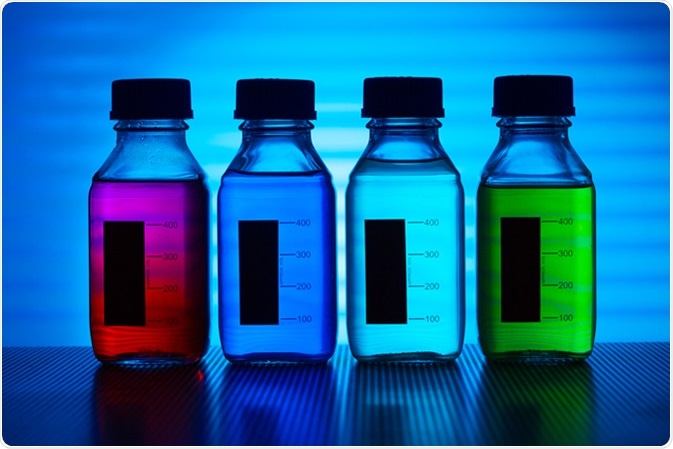Food flavors and colorings are commonly used to enhance the natural properties of chemical substances found in foods. Food colorings may be used to make foods look more appealing, while food flavorings are added to enhance existing flavor or add new flavor to otherwise bland products.
Increasing attention is being paid to food additives used nowadays, with growing concerns about their safety and potential health risks. In particular, the effect on children’s development and behaviour is a topic of ongoing discussion.
What are Food Flavorings?
Food flavorings are added in order to enhance food flavors, e.g., sweeten or add new flavor to otherwise bland products. Food flavorings may also aid in preservation of the products or help to ensure that the product stays fresh for a prolonged period of time. Food flavorings may be natural or artificial.
Whole natural food flavorings are generally considered healthier and safer, but this may not always be the case. For example, natural almond flavoring is a source of poisonous hydrogen cyanide, while no such chemical is present in the artificial almond flavoring. Food flavorings do not add nutritional value to food products, and may sometimes be harmful in nature. Smoked foods especially are considered carcinogenic, but are appreciated due to their particular flavor.
What are Food Colorings?
Food coloring is any dye, pigment or other chemical substance added to an edible product in order to change or enhance its color. They may be added to foods and drinks, as well as medicines. Colorings serve to make foods look more appealing, as well as to match consumer expectations of what a product should taste like. Studies have shown that there is a link between the flavor and expected color of a food, and the color may affect sensations during consumption. Food colorings in use may be natural, artificial or identical to nature.

Set of of food colorants, food additives. Image Credit: science photo / Shutterstock
How is the Safety of Food Flavoring and Coloring Assessed?
All member states of the European Union follow strict regulations established by the European Food Safety Authority (EFSA), belonging to the European Commission. The US and many other countries around the world also have strict laws governing this area. It is important to note that those regulations are in line with current scientific knowledge and evidence regarding possible toxicity of food additives. As such, they are under constant review, as new evidence emerges on the safety and possible health impact of food additives used.
Permission to use food flavorings and colorings is subject to the ability of the substances to pass a wide range of toxicity tests in each member state before approval. It should be noted that nine dyes in wide use today in the US have been shown to be dangerous in some degree, by causing carcinogenicity, genotoxicity, or hypersensitivity.
The Effects Of Artificial Food Dyes | Dr. Rebecca Bevans | TEDxCarsonCity
What are Some Risks Associated with Food Additives?
While food additives must pass a range of safety tests, some substances are topic of ongoing discussion due to their possible harmful effects. Some health risks related to the consumption of artificial food additives include:
- allergic reactions and food hypersensitivity
- worsening of asthmatic symptoms
- abdominal pain, diarrhoea and vomiting
Growing attention has been focused on a group of food colorings called the azo-dyes, which are commonly used to add bright colors to edible products. After consumption the chemical substances contained in azo-dyes are metabolised by the intestinal bacteria in a chain of reactions, and then become a source of potentially carcinogenic products. However, the clinical effects depend on the amount of coloring ingested, which typically is of negligible amount, and the azo-dyes tend to be poorly absorbed into the blood stream as well. New toxicity concerns have been found, however, in the use of certain colorants due to their ability to bind to human serum albumin.
Furthermore, concern is being raised as to a possible link between food additives and neurological development, including attention deficit hyperactivity disorder (ADHD) in children. A number of large studies have been performed worldwide to explore the possible relationship between food colorings and ADHD in children (in years 2004, 2007 and 2012), but no conclusive evidence had been found to date. However, a study performed in 2012 has found evidence that children with ADHD show significant improvement when the amount of food colorant in their diet is restricted.
The EFSA panel and FDA have concluded from this recent evidence that this relationship requires further exploration in future studies.
Food additives may also be a source of allergic reactions, including anaphylaxis and asthma. Hypersensitivity reactions to certain foods are appearing more often than ever, particularly in children, and there is a need for further exploration of the possible links between allergic reactions and food colorings and flavorings.
Sources
- The artificial food dye blues. Environ Health Perspect. 2010;118(10):A428.
- Feketea G, Tsabouri S, Common food colorants and allergic reactions in children: Myth or reality? Food Chemistry, Volume 230, 2017, https://doi.org/10.1016/j.foodchem.2017.03.043
- Amchova P, Kotolova H, Ruda-Kucerova J, Health safety issues of synthetic food colorants, Regulatory Toxicology and Pharmacology, 2015, https://doi.org/10.1016/j.yrtph.2015.09.026
- European Flavor Association http://effa.eu/eu-legislation/additives
- European Commission https://ec.europa.eu/food/safety/food_improvement_agents/additives_en
- http://europa.eu/rapid/press-release_MEMO-11-783_en.htm
- https://www.ncbi.nlm.nih.gov/pubmed/25849411
- https://www.ncbi.nlm.nih.gov/pubmed/23026007
Further Reading